tags: Seattle Washington, Montlake Fill, Union Bay Natural Area, urban wetland, urban nature preserve, University of Washington
Entrance to the Union Bay Natural Area (UBNA), more commonly known as the "Montlake Fill".
One of my most favorite places to go birding is the Union Bay Natural Area (UBNA), which I have always known as the Montlake Fill. In my opinion, this is one of the finest small- to medium-sized urban birding areas and nature preserves on the west coast.
This area originally started out as a freshwater wetland, but the early residents of Seattle, in their infinite short-sightedness, decided to use this "swamp" as a dumping place for all their garbage. This practice continued for decades until the "Montlake Landfill" was closed by the city, and then the land was later given to the University of Washington with the understanding that the biologists there would set up a research program designed for reclaiming urban wastelands into wild areas.
So the UBNA restoration project was born. It has been ongoing for quite some time now, and the graduate students in the program are designing new ways for reclaiming wetlands and for re-introducing native plant life.
As you walk through the area, one thing that you will notice is that some areas are filled with a forest of small blue plastic tubes. These tubes are small greenhouses that form a microclimate with higher humidity than ambient so the seedlings of native plants growing inside can get a good start in life.
Mini-greenhouses to help seedlings of native plant species get a start.
Normally, these young plants grow up amid dense brush, which provides a similar higher-humidity microclimate, but since the native vegetation was cleared long, long ago, this is the solution that the researchers have worked out.
Fortunately for this reclamation project, the city closed the dump before our more moxious modern garbage could be disposed of in the Montlake Fill -- garbage that could cause lasting environmental damage. Nevertheless, my early days of birding at the Montlake Fill occurred when there still were flames shooting out of the ground through tall rusted pipes, when the earth sometimes fell out from under my feet due to the sudden shifting of a rusting washing machine or some other large piece of decomposing metal.
I hope I am not revealing myself as a mid-cretaceous fossil if I admit that I remember a time when this tree (above) was still standing. According to my recollections, this tree was always a snag, but it was once in an upright position until a big windstorm blew it over. I think that windstorm happened a year or two before I defended my dissertation and left Seattle for my postdoc in NYC.
That tree was lying in the slough (Ravenna slough?) that runs along the west side of the Montlake Fill, separating it from the vast University of Washington playing fields. This slough is spanned by several bridges, one of which leads into the gravel parking lot, which is known as the "Dime Lot" because it once (during the previous millennium) cost only one dime to park there.
I really like this bridge because it creates a rather Monet-esque feeling.
While wandering the Montlake Fill on this glorious Seattle day, I saw two red-tailed hawks, Buteo jamaicensis (one adult and one juvenile), in an aerial duel, I saw and heard two adult male Anna's Hummingbirds, Calypte anna, arguing over territory, as well as flocks of Cedar Waxwings, Bombycilla cedrorum, American Goldfinches, Carduelis tristis, Song Sparrows, Melospiza melodia, and American crows, Corvus brachyrhynchos -- a seemingly ubiquitous species that is so noticeably absent from NYC. I also managed to get a few images of this hunting Great Blue Heron, Ardea herodias, on the shore of Lake Washington (below). This bird caught a fish right after I snapped this picture.
Hunting Great Blue Heron, Ardea herodias, on the shore of Lake Washington,
in the Montlake Fill.
Below is one of the ponds at the Montlake Fill that remains wet all year round (most of the ponds dry out in the summer months). This pond, which I always referred to as "the Central Pond", is deep enough to provide refuge and food for migrating ducks, particularly dabbling ducks such as Mallard, Gadwall, several species of teal, and small diving duck species, especially Bufflehead and Ruddy Ducks. It also is popular during the spring with nesting Canada geese, which use it as a creche for their chicks.
The Central Pond was almost completely filled up with the invasive exotic plant, purple loosestrife, Lythrum salicaria, that originally was introduced into North America by gardeners who liked the flowers. Purple loosestrife is killing this nation's wetlands and depriving migrating birds and other wildlife of their habitat, so for years, everyone who regularly birded the Montlake Fill would "pay their dues" by pulling up these plants from the muddy shoreline of the Central Pond. Additionally, groups of us often formed "Purple Loosestrife Pulling Parties" on Saturday mornings. Fortunately, this invasive plant is now being controlled by an insect predator, so the shore is once more open and free of this plant, and migrating shorebirds return to feed and rest here every spring and autumn.
If you look closely at the above image, you will see some of the University of Washington buildings in the background on the left.
The shorelines of the Montlake Fill are bordered by numerous cattails (above). This plant creates perfect breeding habitat for Red-Winged Blackbirds, Agelaius phoeniceus, and Marsh Wrens, Cistothorus palustris, as well as providing a welcome refuge and feeding area for yellow-rumped ("butter butts"), Dendroica coronata, and yellow warblers, Dendroica petechia.
There are quite a few trees on the Montlake Fill. I watched this lone tree (below) grow from a mere sapling. I am not sure (someone will correct me, I hope), but I think this is a young apple tree.
One of the more curious trees that has been living on the Montlake Fill for as long as I have been birding there is this lone pine tree. It looks like a Ponderosa Pine Tree to me. Since I spent part of my childhood in the much drier eastern side of the state, I am very familiar with Ponderosa Pine Trees, and the strange assortment of shapes that they can assume are not generally surprising to me. But that said, this tree always surprises me: first; how did it get here? and second; I've never seen a Ponderosa Pine that has managed to keep the branches that are so close to the ground, so how has this lone tree managed to do so?
Tomorrow evening, I will tell you about my visit to the Biology Department's greenhouses at the University of Washington [part one and part two].
- Log in to post comments

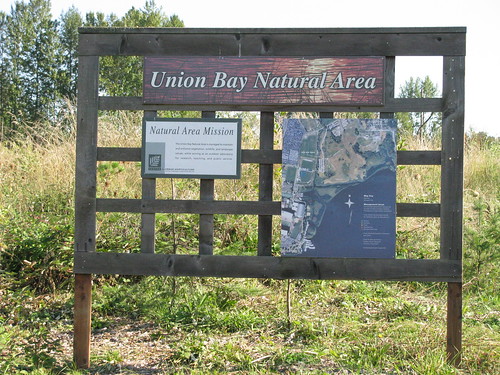

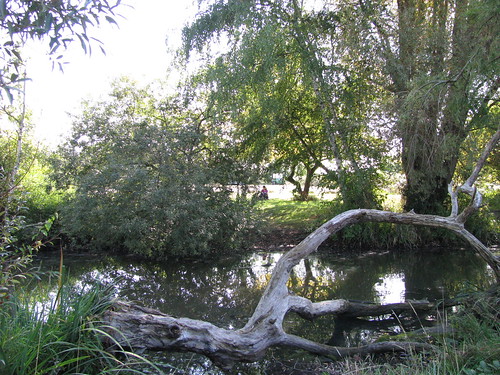
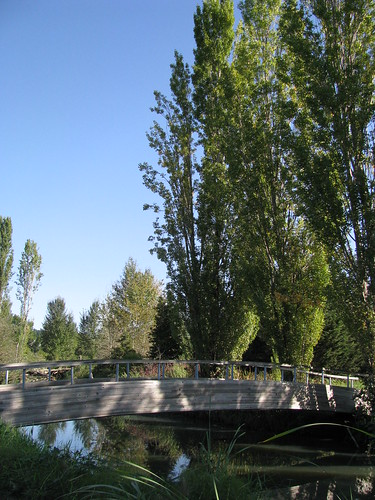
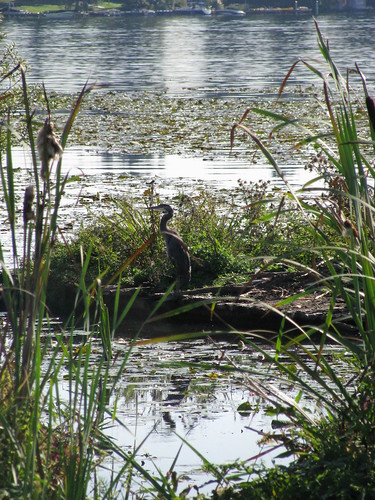
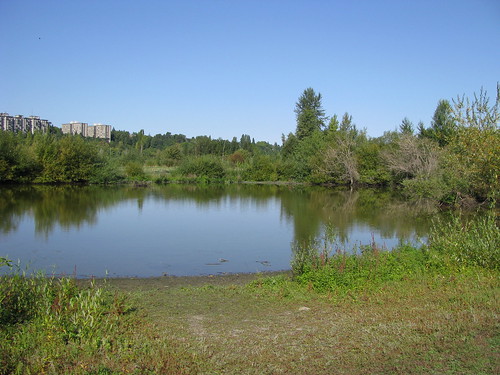
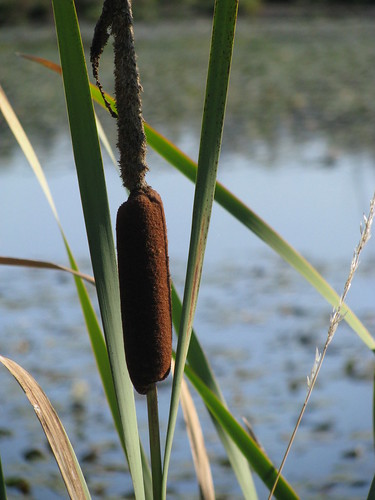
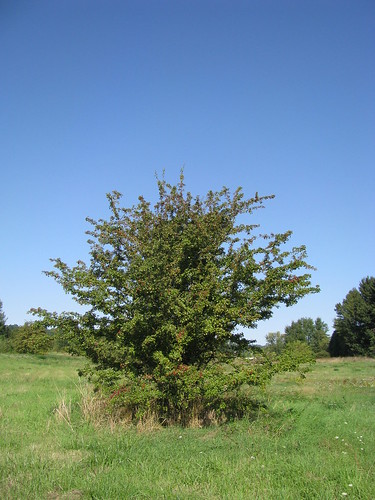
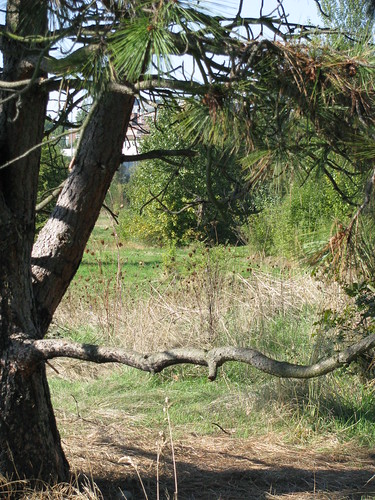
Eek! Purple Loosestrife 'round the central pond!
I remember participating in loosestrife pulling work parties when visiting Seattle from Portland many years ago. My understanding is that biological controls are now helping to keep it in check.
Have the shorebirds returned during migration? I remember Dennis Paulson talking about how it used to be great for shorebirding before the loosestrife took hold ...
Great pictures!
I agree with RM; the photos are wonderful. Thanks for sharing your trip with us! It makes me want to visit Seattle.
By the way, what's the problem with loosestrife?
Wow, you're making me all proud to be a Seatlle-ite and stuff.
Kidding aside, this is a great town, hands down. Wet and dark in winter, no doubt, but that makes the summers so much more green and precious.
Same as with so many other invasive species, it runs rampant. In the case of the pond at the fill, the open edges of the pond became overgrown with thick loosestrife, so there was no "shore" for the shorebirds to feed on.
Actually, Purple Loosestrife is no longer the problem that it used to be. An insect (whose name I've forgotten) was imported and used as a biological control. Its apparently one of the only successful examples of biological control at all. The Purple Loosestrife that remains at the UBNA is left deliberately to act as a food source and reservoir for the insects that feed on it. Thus, while it will always be present, it will not ever become the invasive problem it once was because it now has a predator in the ecology. I'm getting all this from a nature talk with Dr. Kern Ewing, a professor there who oversees the UBNA.